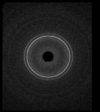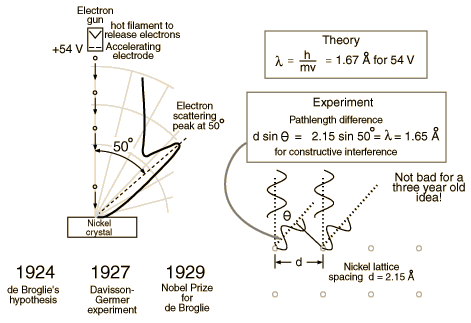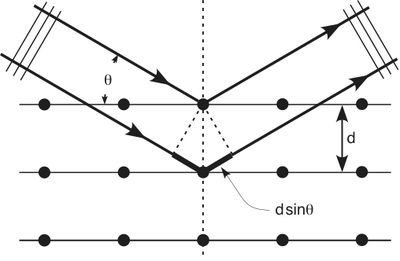Difference between revisions of "Forest ModernPhysics"
Jump to navigation
Jump to search
| Line 44: | Line 44: | ||
Another way to calculate | Another way to calculate | ||
| − | p_{X-ray} = \frac{hc}{\lambda c} = \frac{1240\mbox{ eV} \cdot \mbox{nm}}{0.071 \mbox{nm} | + | <math>p_{X-ray} = \frac{hc}{\lambda c} = \frac{1240\mbox{ eV} \cdot \mbox{nm}}{0.071 \mbox{nm}</math> |
Hit a crystal made of nickel with 54 eV electrons. | Hit a crystal made of nickel with 54 eV electrons. | ||
Revision as of 01:48, 30 September 2009
Matter Waves (Wave Particle Duality)
Special relativity said that
if m=0
Plank said he could fit the Black Body radiation data assuming that that
where = Plank's constant
Combining the two we have
photons have momentum like a particle (mv)
Do particles reciprocate and behave like photons?
De Broglie's Hypothesis
If photons can behave like particles by having momentum
Then can a particle behave like a wave by having wavelength
or
de Broglie Hypothesis
Davisson and Germer
We know that X-rays having a wavelength of make an interference patter on an aluminum foil.
Another way to calculate
Hit a crystal made of nickel with 54 eV electrons.
1.) 54 eV electrons
From hyperphysics:


